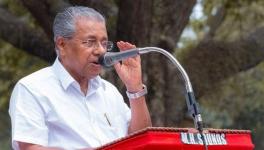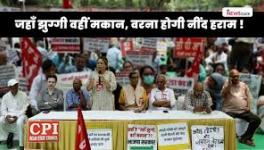Kerala: Setting a Quiet Counter-Narrative to Growth Orthodoxy

In an era dominated by metrics like GDP (gross domestic product) growth, investor confidence and ease-of-doing-business indices, Kerala offers a slow-burning but persuasive counter-narrative. The Southern state has achieved enviable gains in public health, education, housing and poverty eradication; not by scaling back the State’s role, but by deepening it.
This path has been far from easy. For years, Kerala has operated under structural financial strain. The implementation of the Goods and Services Tax regime in 2017 severely restricted the state’s fiscal autonomy. Central tax devolution declined and the compensation cess promised to states was withdrawn in mid-2022. Coupled with a uniform borrowing ceiling under the Fiscal Responsibility and Budget Management Act, this put states like Kerala in a bind: committed to high public investment but short on manoeuvrable resources.
Yet, remarkably, Kerala’s welfare architecture has not only endured but expanded. According to its 2024–25 budget, the state’s own tax revenue increased from ₹47,661 crore in 2020–21 to ₹84,884 crore, an impressive 78% growth. This was achieved without rolling back social spending. In fact, Kerala now spends nearly 60% of its revenue budget on education, health, pensions, food subsidies and rural development.
This fiscal resilience would be noteworthy in any context. But what truly sets Kerala apart is what it has done with these resources. As per the latest Multidimensional Poverty Index data published by NITI Aayog, Kerala’s poverty incidence is just 0.55%, the lowest in India. The state ranks at the top of the Sustainable Development Goals Index and it is the only large state in India with near-universal access to clean water, electricity and sanitation.
Central to this success is an ecosystem of decentralised governance. The Extreme Poverty Eradication Project (EPEP), launched in 2021, illustrates the model. Working with local governments and women-led neighbourhood groups under Kudumbashree, the state identified over 64,000 households in conditions of extreme poverty. Each was mapped for specific vulnerabilities—lack of housing, disability, elderly dependence, or joblessness and received integrated assistance ranging from housing to pensions to health insurance.
Housing, in fact, has become a cornerstone of Kerala’s developmental template. Under the LIFE Mission, over 4.27 lakh homes have been completed, with another one lakh planned. These are not just shelter units but fully-serviced residences with access to water, sanitation and power. In parallel, public health coverage under Karunya and KASP (Karunya Arogya Suraksha Padhathi) now reaches over 42 lakh families, with benefits extending up to ₹5–10 lakh annually per household.
The Kudumbashree programme deserves particular mention. With over 4.8 million women members, it is among the largest women-led self-help networks in the world. Beyond credit access and microenterprise, Kudumbashree now runs care services, canteens, skill centres and has entered sectors like agriculture and tourism. It also plays a pivotal role in service delivery for many government schemes.
Kerala’s development, however, isn’t without its contradictions. Perhaps the most significant is the paradox of migration. The state’s human development investments, particularly in education and skill training, have enabled high rates of out-migration, especially to the Gulf countries. Remittances are a lifeline, contributing approximately ₹2.1 lakh crore annually, or nearly one-fifth of its GSDP (gross state domestic product).
Yet, youth unemployment remains a major concern. Among the 15–29 age group, the unemployment rate is close to 30%, with female youth unemployment touching nearly 47%. The challenge lies in generating meaningful employment within the state for a workforce that is increasingly educated but underutilised.
In response, the state has begun developing a more structured migration management and reintegration framework. Through NORKA (Non-Resident Keralites Affairs), it offers returnee support schemes like NDPREM and NAME, and organises diaspora policy consultations through the Loka Kerala Sabha. The Shubhayatra scheme and a student migration portal are newer efforts aimed at ensuring ethical, transparent pathways for outward mobility.
Looking ahead, Kerala faces a new set of pressures. The state's population is ageing fast and by 2031, more than 20% of its residents will be over the age of 60. This demographic shift has prompted the expansion of eldercare initiatives like Kerala Care and the Palliative Care Grid, which now supports nearly 1.35 lakh bedridden patients. In a state where longevity is increasingly matched by chronic illness, this model of community-based palliative outreach has quietly become a national reference.
Climate change presents another layer of complexity. Following three major floods in five years, Kerala is reimagining infrastructure with resilience in mind. The Green Hydrogen Valley initiative and ₹12,500 crore allocated for climate-resilient roads and coastal infrastructure reflect a deeper commitment to sustainability.
While the Centre continues to centralise fiscal levers, limiting borrowing powers and raising matching contributions for centrally-sponsored schemes, Kerala is pushing for more autonomy. It is exploring development bonds, cooperative-led financing and state-level climate funds. Public institutions, like the Kerala Financial Corporation, are being revitalised, recently reporting ₹98 crore in profits and supporting over 3,000 startups.
What emerges is a story not of miracle or model, but of a state making deliberate choices: to privilege dignity over speed, rights over markets and participation over spectacle. Kerala’s achievements are often understated, wrapped in the slow, administrative cadence of gram sabhas, social audits and village health workers. But these are achievements nonetheless, grounded in a belief that public investment can be both humane and efficient.
In a national environment where welfare often competes with growth in policy rhetoric, Kerala demonstrates that the two are not just compatible, but mutually reinforcing. It is, in many ways, a quiet experiment in rethinking what progress means in the Indian context.
Sources include Kerala State Budget 2024–25, NITI Aayog, Department of Economics and Statistics, Government of Kerala.
The writer is a policy economist and a fellow at Governance Innovation Labs. X: @yadul_krishna. The views are personal.
Get the latest reports & analysis with people's perspective on Protests, movements & deep analytical videos, discussions of the current affairs in your Telegram app. Subscribe to NewsClick's Telegram channel & get Real-Time updates on stories, as they get published on our website.
























